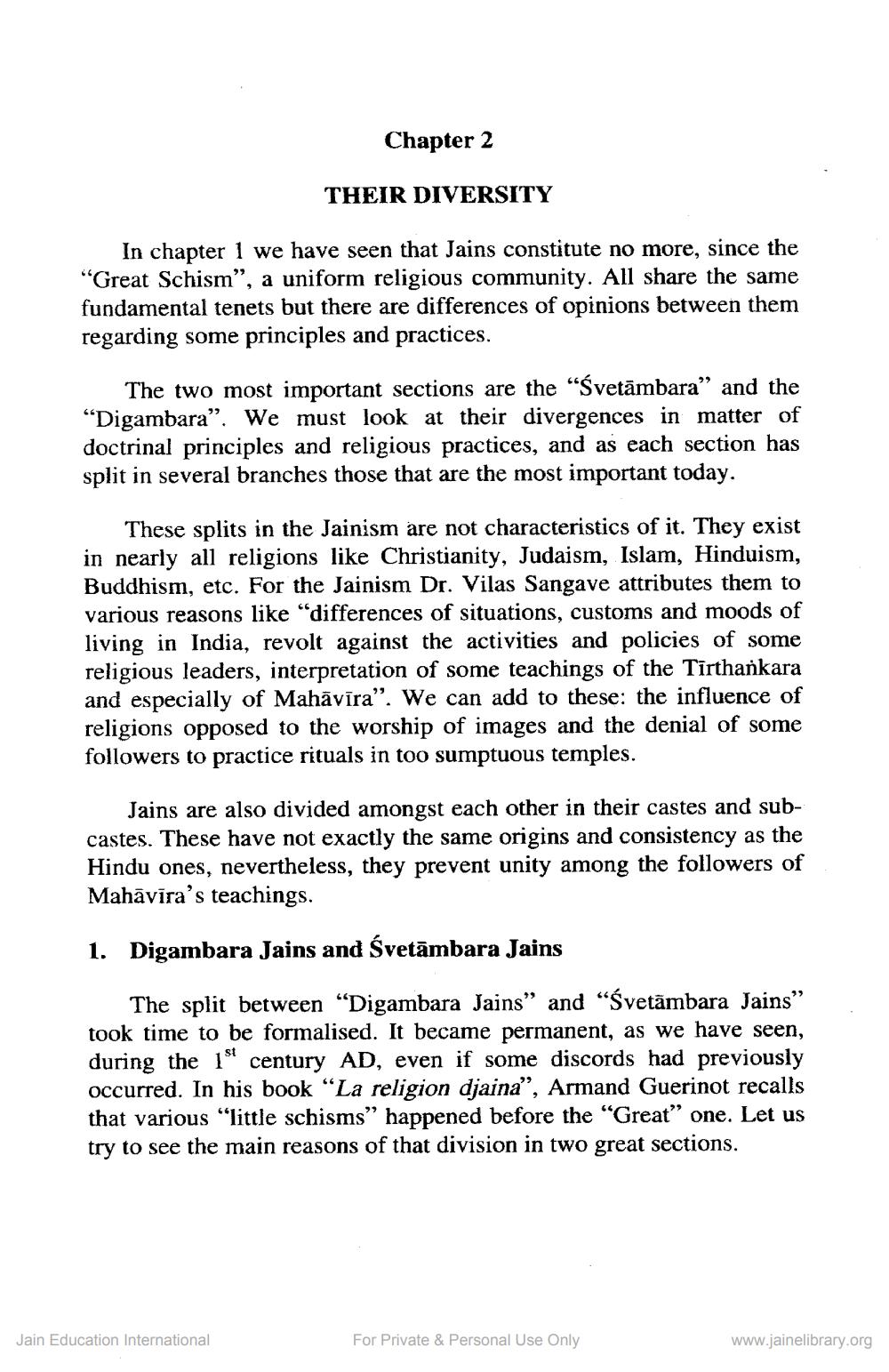________________
Chapter 2
THEIR DIVERSITY
In chapter 1 we have seen that Jains constitute no more, since the "Great Schism", a uniform religious community. All share the same fundamental tenets but there are differences of opinions between them regarding some principles and practices.
The two most important sections are the "Śvetämbara" and the "Digambara". We must look at their divergences in matter of doctrinal principles and religious practices, and as each section has split in several branches those that are the most important today.
These splits in the Jainism are not characteristics of it. They exist in nearly all religions like Christianity, Judaism, Islam, Hinduism, Buddhism, etc. For the Jainism Dr. Vilas Sangave attributes them to various reasons like "differences of situations, customs and moods of living in India, revolt against the activities and policies of some religious leaders, interpretation of some teachings of the Tirthankara and especially of Mahavira". We can add to these: the influence of religions opposed to the worship of images and the denial of some followers to practice rituals in too sumptuous temples.
Jains are also divided amongst each other in their castes and subcastes. These have not exactly the same origins and consistency as the Hindu ones, nevertheless, they prevent unity among the followers of Mahavira's teachings.
1. Digambara Jains and Śvetāmbara Jains
The split between "Digambara Jains" and "Svetambara Jains took time to be formalised. It became permanent, as we have seen, during the 1st century AD, even if some discords had previously occurred. In his book "La religion djaina", Armand Guerinot recalls that various "little schisms" happened before the "Great" one. Let us try to see the main reasons of that division in two great sections.
Jain Education International
For Private & Personal Use Only
www.jainelibrary.org




